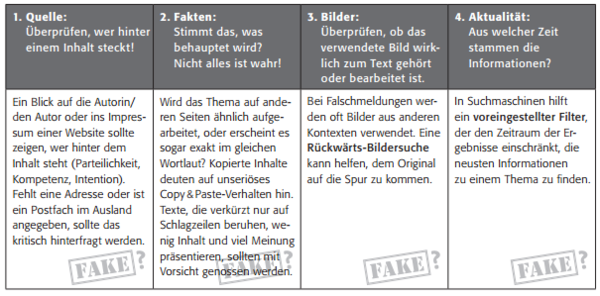Fake News
Young people in particular mainly use social networks or blogs to find out about news and current events. In doing so, they run the risk of picking up and spreading false reports from manipulative news sites. When it comes to dealing with fake news, children and young people in particular need age-appropriate education and support.
The term "fake news" has found its way into the public debate, especially since 2016 in the wake of Donald Trump's election as U.S. president and after the Brexit referendum. "Fake" in English means forgery, hoax, or even imitation. In this sense, fake news is fake news masquerading as real news. They imitate journalistic formats in order to pretend to be trustworthy information and thus committed to the truth. However, the creators are not at all concerned with enlightenment, but with influencing political debates by creating sentiment for or against certain topics, persons, groups or organizations in order to weaken their (political) positions.
In the academic debate on thema of false information, the term "fake news" is largelyrejected because, in addition to the genre designation, it is also used as a label or rather as a fighting term to delegitimize the established news media (similar to the term "lying press" in Germany). In contrast, the term "disinformation" is favored.
Hoax
False reports are also called hoax or hoax news. According to Wikipeda, the word hoax is derived from hocus, which in turn is a contraction of hocus pocus ("hocus pocus"). The hoaxmap.org site collects and debunks rumors and hoax reports about asylum seekers throughout Germany.
Information literacy & Source criticism
To assess the credibility and truthfulness of a message, teens can shy;ask messages behind&using the following steps:
Children from the age of eight can learn all about fake news from the children's search engine frag FINN. In the online learning module: "Fake News - Searching for clues with FINN", they learn together with FINN what fake news is, why it can cause harm and how to recognize it. With three great exercises, they become fake news professionals!
Check facts
If you are suspicious of a news item, you can check the following fact-check offers to see whether the corresponding news item has already been checked. Because if fake news is circulating on the web, there may already be counterstatements.


